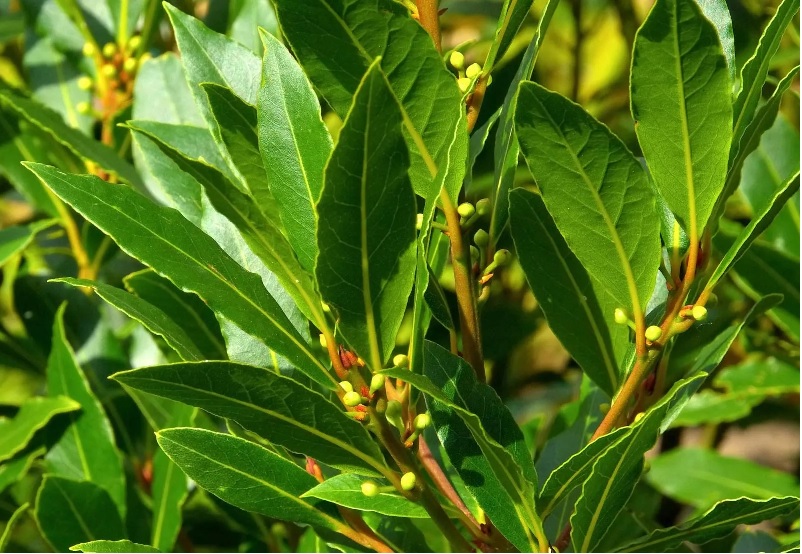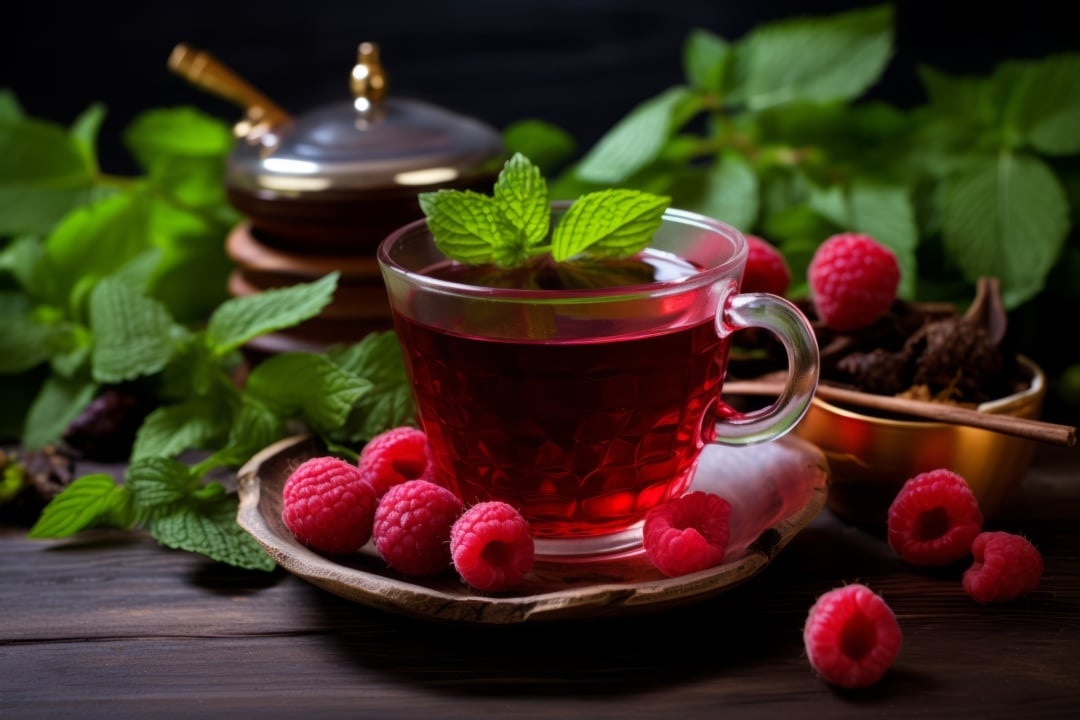The Bay Leaf Tree (Laurus nobilis), also known as sweet bay or laurel, is a small evergreen tree valued for its aromatic leaves, which are commonly used in cooking, traditional medicine, and even home remedies. Originating in the Mediterranean region, the bay leaf tree has gained popularity around the world for its culinary and health benefits. In this article, we’ll delve into everything you need to know about the bay leaf tree, including how to grow it, the benefits and uses of bay leaves, and the growing interest in bay leaf tea and culinary establishments like the Bay Leaf Restaurant.
What Is a Bay Leaf Tree?

Characteristics of the Bay Leaf Tree
The bay leaf tree is a slow-growing, evergreen tree that typically reaches between 10 to 20 feet tall, although it can grow taller in warmer climates. Its dark green, glossy leaves are not only visually appealing but also possess a distinct fragrance and flavor that make them a staple in many kitchens. The tree produces small, yellow flowers that bloom in spring and bear small black or purple berries in the fall.
Historical Significance and Symbolism
Historically, bay laurel leaves were considered sacred in Greek and Roman cultures. Worn by leaders, scholars, and athletes, they symbolized victory and honor. Today, bay leaves continue to hold a special place, both in the culinary and wellness communities, due to their distinct flavor and medicinal properties.
The Many Benefits of Bay Leaves

Nutritional Profile of Bay Leaves
Bay leaves are rich in vitamins A, C, and B6, along with essential minerals such as calcium, iron, and magnesium. They also contain unique compounds like eucalyptol and linalool, which are known for their antibacterial, antifungal, and anti-inflammatory properties.
Health Benefits of Bay Leaves
- Digestive Aid: Bay leaves contain enzymes that help break down proteins and improve digestion, reducing symptoms like bloating and indigestion.
- Anti-inflammatory Properties: The presence of eugenol, a natural anti-inflammatory compound, makes bay leaves beneficial for reducing inflammation in the body.
- Supports Heart Health: Bay leaves are a natural source of compounds that help regulate blood sugar and cholesterol, reducing the risk of heart disease.
- Antioxidant Power: Bay leaves are rich in antioxidants that help neutralize free radicals and protect the body from oxidative stress.
- Blood Sugar Regulation: Bay leaves have been shown to improve insulin function, making them a useful dietary addition for those with diabetes or blood sugar issues.
How to Grow a Bay Leaf Tree
Growing Conditions
Bay leaf trees thrive in Mediterranean climates with mild winters and hot, dry summers. However, they can be grown in various climates, provided they are protected from harsh winter conditions.
- Soil: Well-draining, sandy soil is ideal. Bay trees prefer a neutral to slightly acidic pH.
- Sunlight: Full sun is best, but they can tolerate partial shade.
- Watering: Water regularly, especially in the first few years, to help establish the root system. Once mature, they are relatively drought-tolerant.
- Temperature: Bay leaf trees are hardy in USDA zones 8-10. In colder climates, they can be grown in containers and brought indoors during winter.
Pruning and Maintenance
Pruning is essential to maintain the shape and health of the bay leaf tree. Remove dead or damaged branches in early spring, and prune it to shape the tree as desired. Pruning also encourages new growth and helps the tree develop a bushier appearance.
Pests and Diseases
While generally hardy, bay leaf trees can suffer from scale insects, spider mites, and aphids. Inspect the leaves regularly and treat infestations promptly with insecticidal soap or neem oil.
Bay Leaf Tea: A Natural Remedy
Bay leaf tea is a popular herbal remedy known for its soothing and therapeutic properties. Made by steeping dried bay leaves in hot water, this tea offers a range of benefits and is increasingly enjoyed as a wellness drink.
How to Make Bay Leaf Tea
Making bay leaf tea is simple:
- Ingredients: 2-3 dried bay leaves, 1 cup of water
- Instructions: Boil the water and add the bay leaves. Let it steep for about 10-15 minutes.
- Serving: Strain the leaves, add honey if desired, and enjoy.
Health Benefits of Bay Leaf Tea
- Relieves Respiratory Issues: The tea’s natural anti-inflammatory properties can help soothe a sore throat, reduce coughs, and clear congestion.
- Aids in Digestion: Drinking bay leaf tea can help reduce bloating and other digestive discomfort.
- Promotes Relaxation: The natural compounds in bay leaves promote relaxation and may help reduce stress and anxiety.
- Blood Sugar Management: Regularly drinking bay leaf tea may contribute to better blood sugar control.
Bay Leaf in Culinary Use
Adding Bay Leaves to Dishes
In the culinary world, bay leaves are used to add depth and flavor to a variety of dishes. The dried leaves are added whole or ground into soups, stews, sauces, and marinades. Commonly used in Mediterranean and Indian cuisines, they provide a slightly floral, earthy flavor with subtle hints of mint and pepper.
- Soups and Stews: Add a couple of bay leaves to broth-based dishes for an extra layer of flavor.
- Curries and Casseroles: Bay leaves pair well with complex flavors, making them a staple in curries and casseroles.
- Meat Dishes: The flavor complements lamb, beef, and poultry dishes exceptionally well.
Important Tip: Always remove bay leaves before serving, as the sharp edges can be tough to chew and may cause throat irritation.
Bay Leaf Restaurant: A Culinary Destination

For those who love gourmet experiences, Bay Leaf Restaurant has become synonymous with flavorful dishes inspired by international cuisines. Known for its focus on seasonal, fresh ingredients and creative use of spices, including bay leaves, the restaurant has garnered attention for its unique fusion dishes and relaxing ambiance.
Signature Dishes at Bay Leaf Restaurant
- Bay Leaf-Infused Soup: A warm, comforting soup with a unique twist, infused with the earthy aroma of bay leaves.
- Herb-Marinated Grilled Meats: Bay Leaf Restaurant uses a special herb blend with bay leaves to marinate their meats, creating rich, complex flavors.
- Vegetarian Delights: The restaurant offers a variety of vegetarian options, with bay leaves used to enhance the flavors of vegetables, grains, and legumes.
Dining Experience and Ambiance
The Bay Leaf Restaurant is not only a culinary destination but also an experience. With cozy, rustic interiors and attentive service, it provides a welcoming environment for both casual diners and food enthusiasts. Reservations are recommended for weekends, as the restaurant tends to attract a crowd due to its reputation.
Tips for Using Bay Leaves at Home
If you want to bring the magic of bay leaves into your own kitchen, here are a few practical tips:
- Storage: Store dried bay leaves in an airtight container away from light and heat to retain their flavor.
- Substitute: If bay leaves are unavailable, try substituting with thyme or oregano, but remember they won’t offer the exact same depth of flavor.
- DIY Bay Leaf Oil: Bay leaves can be infused in olive oil to make a fragrant cooking oil for meat, pasta, and salads.
Final thought
The bay leaf tree is a versatile and valuable addition to any garden or kitchen, offering a wealth of benefits from its leaves. Whether used for culinary, medicinal, or decorative purposes, bay leaves have become an essential ingredient in homes and restaurants alike. The rising popularity of bay leaf tea and dining experiences at places like Bay Leaf Restaurant are a testament to the enduring appeal and functionality of this ancient plant.


